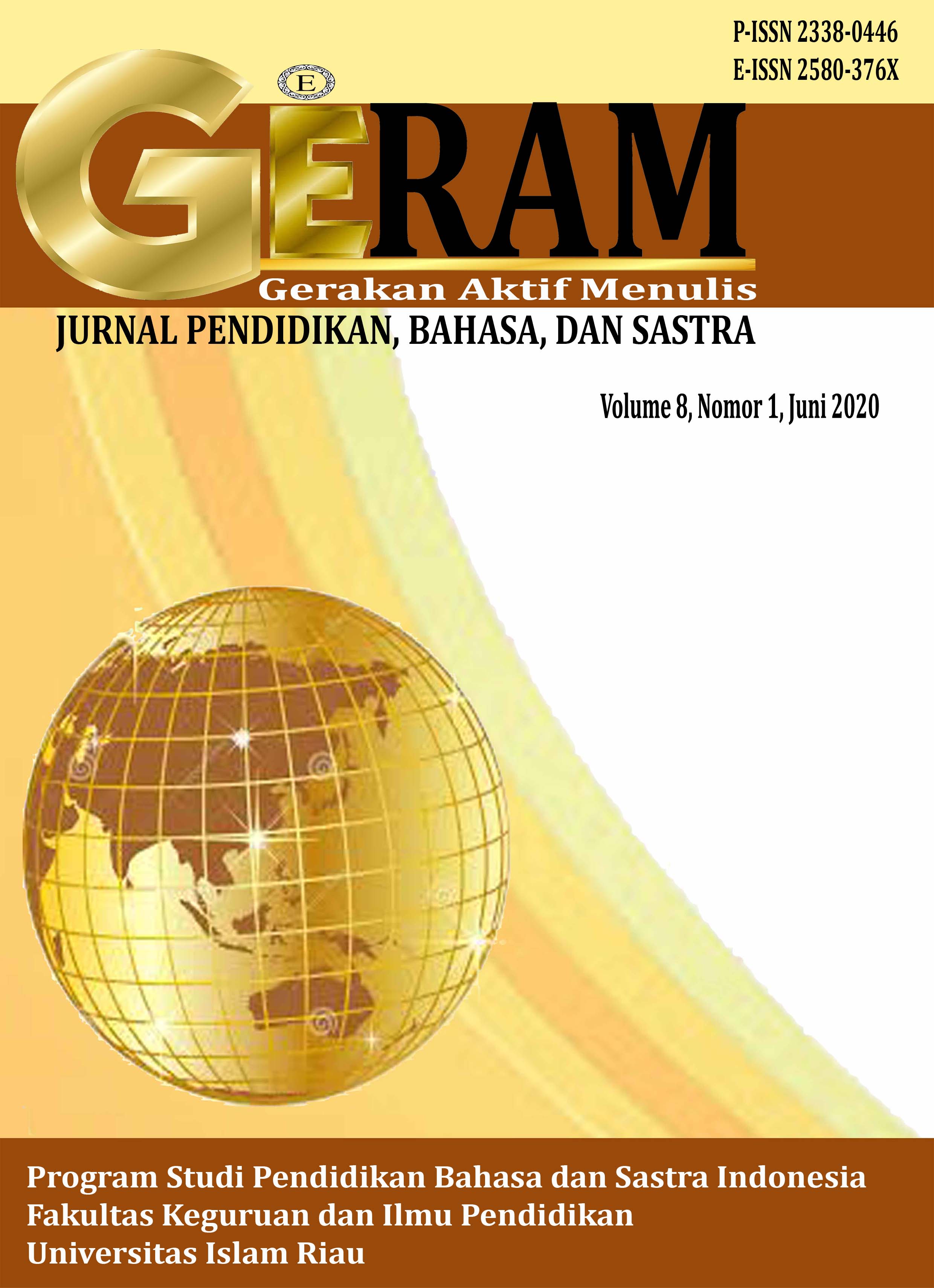Struktur dan Kaidah Teks Anekdot dalam Kumpulan Cerita Abu Nawas
Keywords:
anecdote, Abu Nawas story, language use, structureAbstract
The background of the research was based on the existence of Abu Nawas stories that contain humor aspects. Besides, it has its uniqueness, so that readers are curious. The story of Abu Nawas is categorized as an anecdotal story because it contains the same structure and rules as the anecdotal text. Besides it also has a moral value so that it can be used as alternative teaching material at schools. Regarding the importance of Abu Nawas story, this study aimed to describe the structure and rules of anecdotal texts in the collection of Abu Nawas stories. This research was descriptive qualitative research. This research was conducted in literature. The research took six months. Data was collected using documentation techniques. This research data contained the text of the Abu Nawas anecdotal story containing structure and language use. The data analysis technique used in this study was the procedure and analysis model according to Miles and Huberman which consists of three stages, namely, data reduction, data presentation, and conclusion or verification. The results of this study, first, in terms of the generic structure, 44 anecdotal texts were perfect and 14 texts were not complete. It was proven by the average value which was 94% and was categorized complete based on the standard of anecdotal text structure covering abstract, orientation, crisis, reaction, and coda. Second, in terms of language use, 19 stories were complete and 39 stories did not use the language use properly. It was proven by the average value which was 75% and was categorized complete. The language features used in the form of past tense, rhetorical questions, temporal conjunction, material verbs, and imperative sentences.
Downloads
References
Departemen Pendidikan Nasional. (2008). Panduan Pengembangan Bahan Ajar. Jakarta: Kemendikbud.
Dyah, E., Rustono, W., & Nuryatin, A. (2017). Analisis Teks Anekdot Bermuatan Karakter dan Kearifan Lokal sebagai Pengayaan Bahan Ajar Bahasa Indonesia di SMA. Jurnal Pendidikan Bahasa dan Sastra Indonesia, 6(2). https://doi.org/https://doi.org/10.15294/jpbsi.v6i2.23505
Heryadi, D. (2010). Metode Penelitian Pendidikan Bahasa. Bandung: PUSBILL.
Kemendikbud. (2013). Buku Guru Bahasa Indonesia untuk SMA/SMK/MAK Kelas X. Jakarta: Kementrian Pendidikan dan Kebudayaan Republik Indonesia.
Kemendikbud. (2016). Buku Guru Bahasa Indonesia untuk SMA/SMK/MAK Kelas X (Edisi Revisi 2016). Jakarta: Kementrian Pendidikan dan Kebudayaan Republik Indonesia.
Kosasih, E. (2014). Jenis-jenis Teks (Analisis Fungsi, Struktur, dan Kaidah serta Langkah Penulisannya). Bandung: Yrama Widya.
Mahsun. (2014). Teks Dalam Pembelajaran Bahasa Indonesia Kurikulum 2013. Jakarta: Rajawali Pers.
Mukhlis, M., & Asnawi, A. (2019). Teks Anekdot dalam Cerita Lisan Yong Dollah Pewarisan Orang Melayu Sebagai Alternatif Pemilihan Bahan Ajar Bahasa Indonesia. GERAM, 7(2), 30–43. https://doi.org/10.25299/geram.2019.vol7(2).3774
Oktarisa. N, dkk. (2014). Pembelajaran memahami struktur dan kaidah teks anekdot siswa kelas x sma. Jurnal Kata (Bahasa, Sastra, Dan Pembelajarannya), 3(1), 1–13. Retrieved from download.portalgaruda.org
Sobandi. (2013). Bahasa Indonesia untuk SMA/MA Kelas X. Jakarta: Erlangga.
Sugiyono. (2008). Metode Penelitian Pendidikan: Pendekatan Kuantitatif, Kualitatif, dan R&D. Bandung: Alfabeta.
Yustinah. (2014). Produktif Berbahasa Indonesia SMA/MA Kelas X. Jakarta: Erlangga.

















